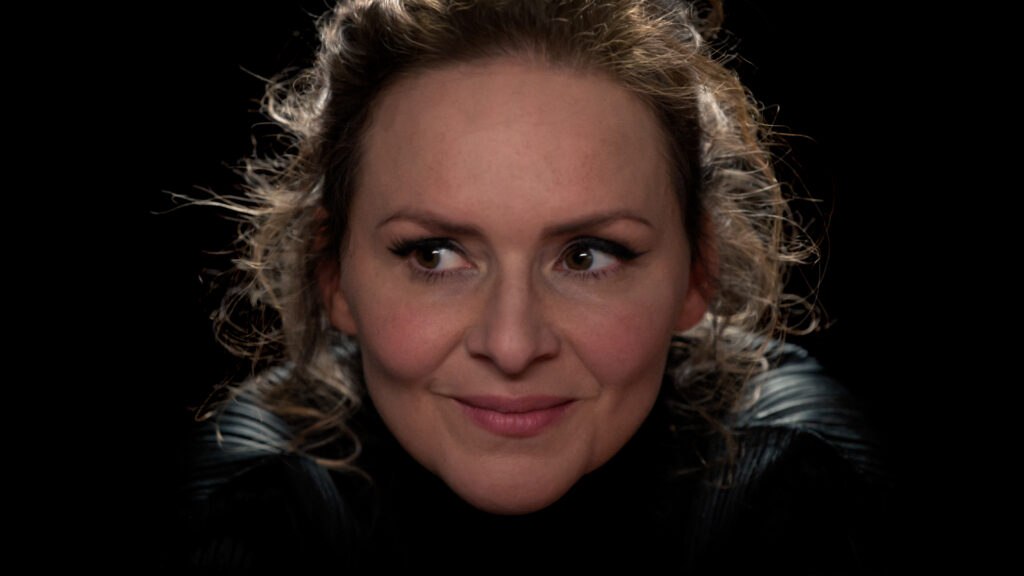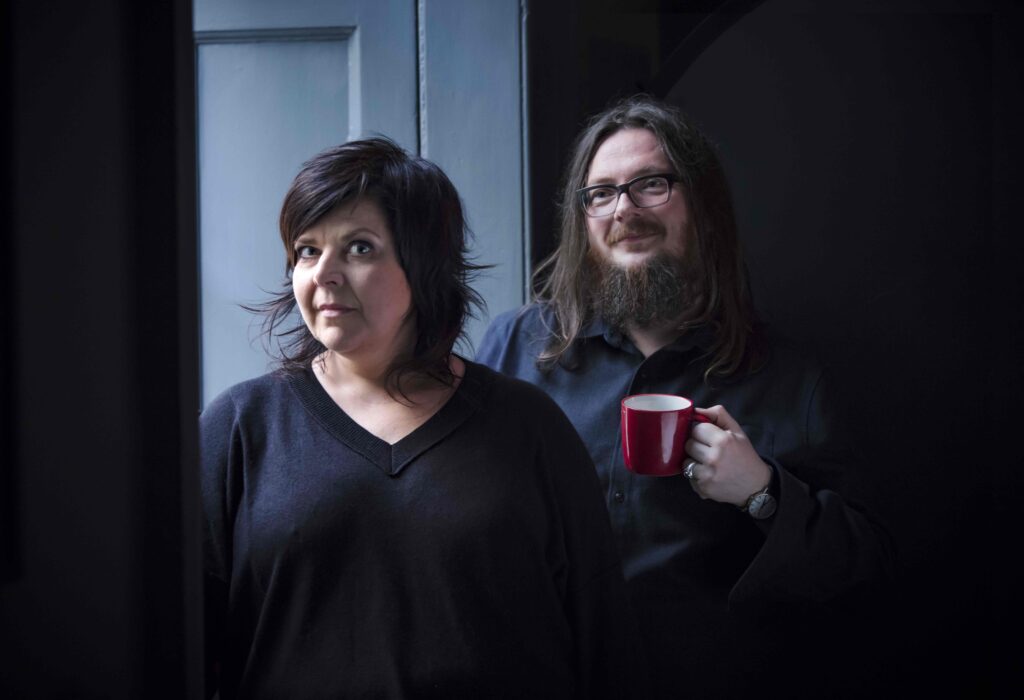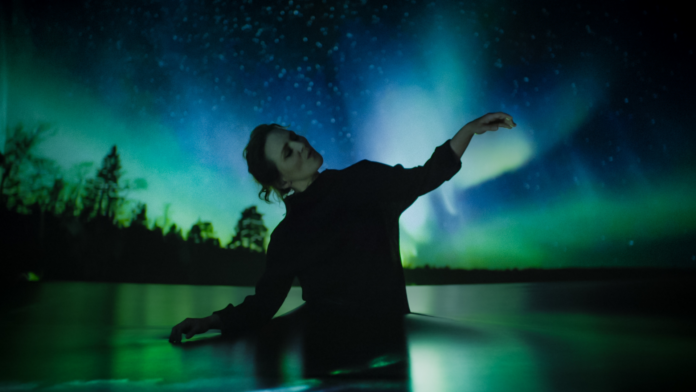A lucid dream-like experience, The Extraordinary Miss Flower is a fantastic film born simply from a box of letters and Emiliana Torrini’s imagination. Exploring the life of Geraldine Flower, the film uses a fantastical blend of song, dance and visual extravagance to tell the tale of an extraordinary individual.
Geraldine Flower impacted many people’s lives, including that of Icelandic musician Emiliana Torrini. She knew Miss Flower on a personal level—she drank cocktails with her and attended parties in her house. When she and several others stumbled upon a box of letters addressed to the late Miss Flower, something sparked within her. She embarked on a journey of songwriting and out came her album Miss Flower. Inspired by the letters, Torrini’s music retells Miss Flower’s extravagant misadventures; from long confessionals with an old Australian friend to mysterious love poems, and the discovery of the nine proposals she once received. Flamboyant and steeped in history, the album laid the foundation for the film, The Extraordinary Miss Flower.
Torrini worked alongside the filmmaking duo of Iain Forsyth and Jane Pollard. The two are experts in the realm of documentary filmmaking, especially in terms of working with musicians; they made waves in 2014 with their feature on musician Nick Cave, 20,000 Days on Earth. Cohesive in their vision and united in their execution, the two banded together a group of creatives—from musicians like Torrini and Cave, to actors like Caroline Catz, and dancers including Kate Coyne—and brought the tale of Miss Flower to life. Zoe Flowers, the daughter of the subject, also served as a producer for the project. This blend of different creatives all telling one story in multiple voices and formats results in an all-encompassing and phantasmagoric experience.
From London to Dublin to Glasgow, The Extraordinary Miss Flower has travelled to various festivals and awed many of the audience. With its May 9th release fast approaching, The Indiependent caught up with Forsyth, Pollard and Torrini at the Glasgow Film Festival to talk about their journey with the film.
Jane and Iain, can you give us a brief introduction to the film and what people can expect from it?
Jane Pollard: We’re still finding it really hard to describe. The film, The Extraordinary Miss Flower, grew out of Emiliana’s album Miss Flower, which came from the discovery of a box of letters. From that, we’ve managed to make this thing together that we’re struggling to find the right words for. It’s a kind of musical, a sort of odyssey, a kind of phantasmagoria of song and scenes. It’s imagery. [Iain], can you do better?
Iain Forsyth: Probably not. I still think it’s a musical, others disagree.
Emiliana Torrini: I love that you call it a musical. No one’s ever called me from Disney.
IF: Not yet!
JP: I guess all of our work is an intersection of the visual and music, and how you translate that onto the screen. Often, it’s done in a way that as a member of the audience, you feel like you missed out on something there. You’re not the primary receiver of this performance; there’s another audience who witnessed it in a purer way. That’s really the kind of challenge we set ourselves: how do we create a manifestation of this album that’s meant for the film audience, that’s not happening for somebody else first.
IF: I guess as filmmakers, that’s the thing that attracts us to a project like this—that makes it different to the other projects that we’re working on. As a filmmaker, you’re generally trying to leverage music somehow in service of the film. You’re trying to enhance an emotion or suggest an emotional journey or somehow use music in a narrative sense. So, when the music comes first, it puts you in a very different creative space to respond to visually, which is really exciting.

Emiliana, what was the experience of first uncovering Geraldine Flowers’ letters and reading them? When did it hit you that you wanted to write them into songs?
ET: It very quickly became a bubble that engulfed everything. From the first letter, we hadn’t really figured that it was going to be a record. Sitting around the box of letters, after Miss Flower had just passed away, there was a different point to writing the songs.
I was living in Iceland and visiting every few months to write with Simon Byrt. Very quickly, that became an obsession. Every time we sat down and listened to Zoe tell the stories of her mum, picking up letters and pictures, it fed my imagination. [Zoe] just allowed me to be free with the story. We didn’t have to make [or] find out what was true; it didn’t really matter. Delving into reality, going through papers or archives, wasn’t the point at all. It was about flight.
JP: That was the biggest challenge of the film, wasn’t it? To exist [and] find its language from the same creative inspiration—not to attempt to uncover, unearth or explain. We weren’t trying to anchor these things down and make them real or actual, but to live inside the same space as them.
I think the reason that we’re drawn a lot to working with musicians is that they have a form of thinking that may be a little more abstract or expressive before becoming narrative. That can make for a really enjoyable approach to visual filmmaking. It can be really lovely to not only be engaged in the act of telling a story but to also be engaged in an act of expression. Songs hold you in a certain state; they give you a three-minute place to set your emotions in.
Jumping from that point, Jane, you’re all creatives in your own right with very different visions. What was the process of coming together for this film like? How did you balance everybody’s ideas without overpowering any of them?
JP: It was quick, that’s what it was. It was incredibly quick. I think that we were already having ideas the first time Emiliana played us a couple of songs. Images came to mind right away. We just started to write some of that down and then, as Iain and I tend to do, we started cutting together other people’s bits of film and stuff. We found some pieces of dancing in a Jamaican club and tried repeating it in a jarring sort of way, and when we showed that to Emiliana she was like, “Oh yeah! That works.” It was just that kind of backwards and forwards.
Having the letters gave us the strands that you need to create a film. The album was one part of that, but the letters became the backbone. Finding somebody who could voice those letters without pretending to be their author—we were absolutely lucky to have such an incredible cast of people reading.

Letter writing is an art form. We see it all the time, letters being uncovered and used to tell stories in narratives in books. For everybody here, was it hard trying to take these stories and turn them into a quick and fulfilling experience? And also, has anybody here been inspired to write longer letters now that you’ve got this film out into the world?
IF: I write very, very long emails to a fault, which I don’t think anybody is particularly grateful for. But I think the thing that the letters really highlighted to us was the sort of lost art of writing long-form and writing as a form of communication. The world constantly progresses, and I can’t imagine we’re going to go back to writing longhand letters to each other any time soon.
[The film] makes us think about slowing down communications [and] relationships. I hope that idea rubs off on the audience. Everything has become so fast and snappy and—how short can I reply with one emoji? Maybe sometimes a little thumbs-up emoji is all you need. But other times, maybe it’d be nice to just take a bit more time with each other and take a bit more care of each other. [It’s] about spending more time with people, taking care and to ask more questions, and being more involved in each other’s lives.
JP: There’s something that happens between you and yourself when you write a letter; that translation of self into words. You’re working something out [and] you’re deciding what you want to communicate; what you want to tell the recipient. Where is the space for people to do that now?
ET: It’s like music writing. You go into this unconscious land where you start to flow and discover a lot about yourself in that kind of self-conversation, the same as you do when speaking with someone else. You’re going into a very inspiring place.JP: It’s no mistake that memories and imagination as concepts are incredibly close together. When we think about bringing out memories, what we’re actually doing is pulling from our imagination. And when we think we’re imagining something, what we’re often doing is pulling from our memories and pulling together fragments of that.
Interview by Mae Trumata
Support the Indiependent
We’re trying to raise £200 a month to help cover our operational costs. This includes our ‘Writer of the Month’ awards, where we recognise the amazing work produced by our contributor team. If you’ve enjoyed reading our site, we’d really appreciate it if you could donate to The Indiependent. Whether you can give £1 or £10, you’d be making a huge difference to our small team.
